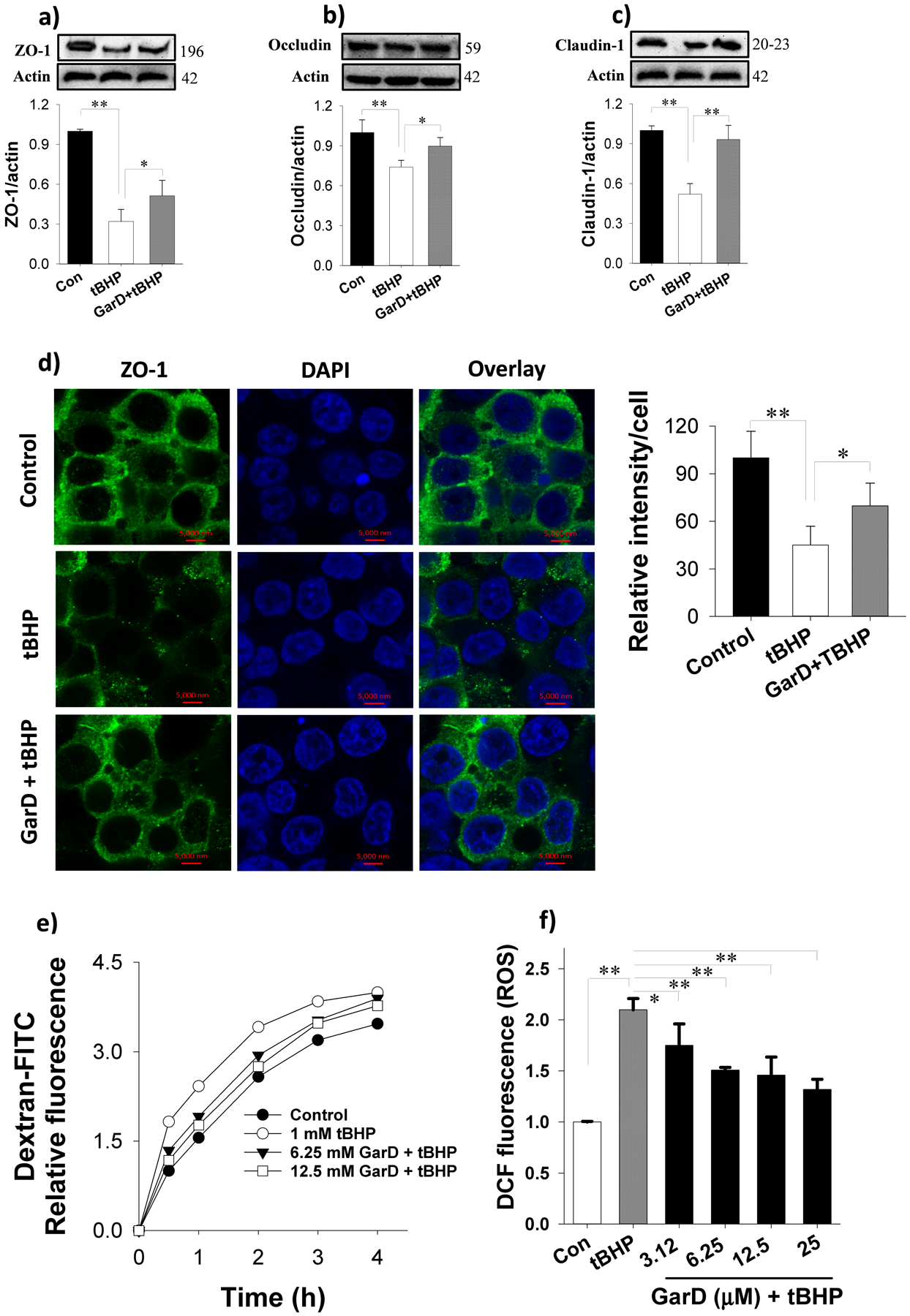Figure 8.

Garcinone D rescues TJ proteins from oxidative stress-induced downregulation in HT-29 cells. Garcinone D inhibited tBHP-induced ROS production in HT-29 cells. Pre-treatment with 12.5 μM Garcinone D followed by a 16-h co-incubation with 50 μM tBHP (oxidative stress inducer) increased ZO-1 (a), occludin (b) and claudin-1 (c) compared to tBHP alone. (d) Immunofluorescence images showing the protective effect of Garcinone D against tBHP-induced ZO-1 protein losses. Cells were pretreated without or with 12.5 μM Garcinone D for 2 h, followed by exposure to 50 μM tBHP for 16 h. Immunofluorescence protocol (described in section 2.11) was followed to probe for ZO-1 proteins using a confocal microscope. (e) Leakage of FITC-dextran into the bottom chamber expressed in relative fluorescence intensity. Cells were pre-treated with or without Garcinone D (added to the apical compartment) for 6 h followed by a 16-h incubation with 100 μM tBHP to establish oxidative stress and disrupt expression of TJ. (f) Garcinone D inhibited tBHP-induced ROS production. Bars bearing * (P ≤ 0.05) and ** (P ≤ 0.01) were significantly different by one-way ANOVA followed by Tukey-HSD test vs control.
